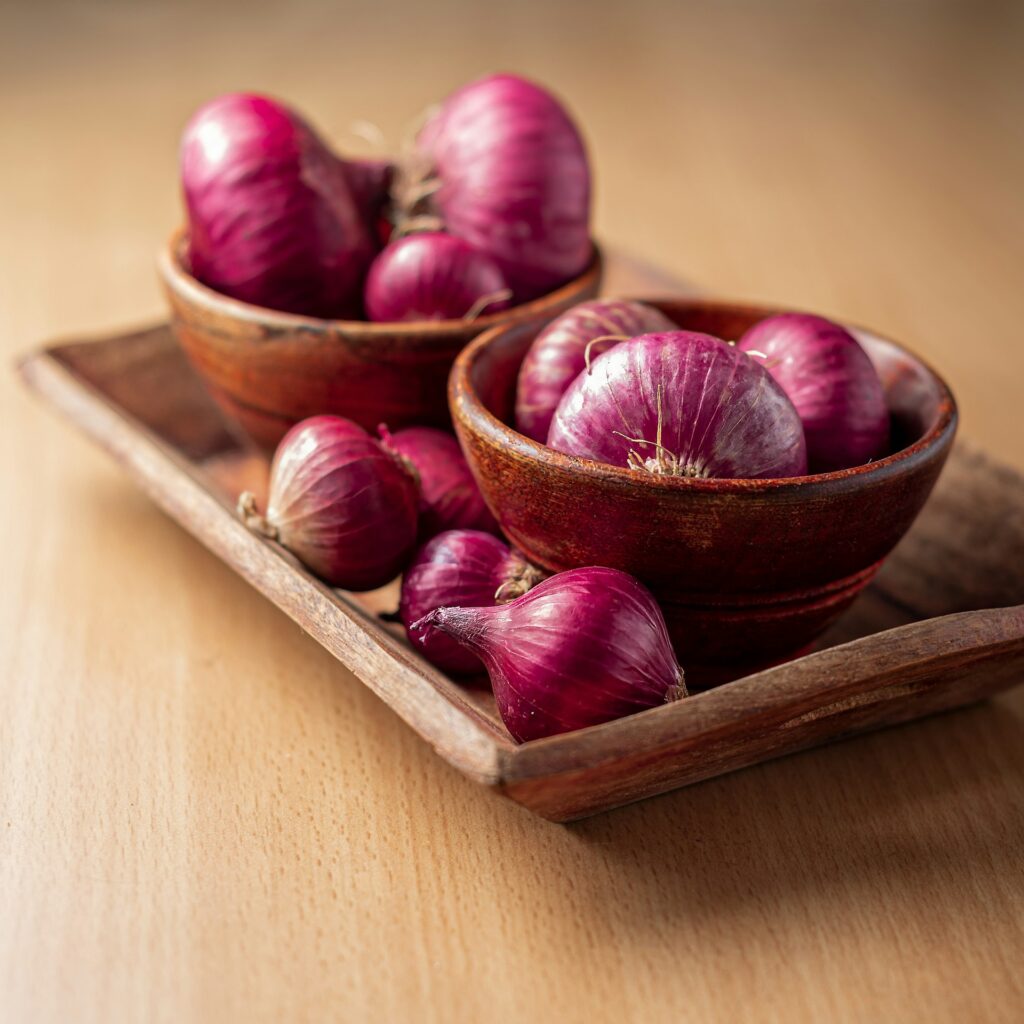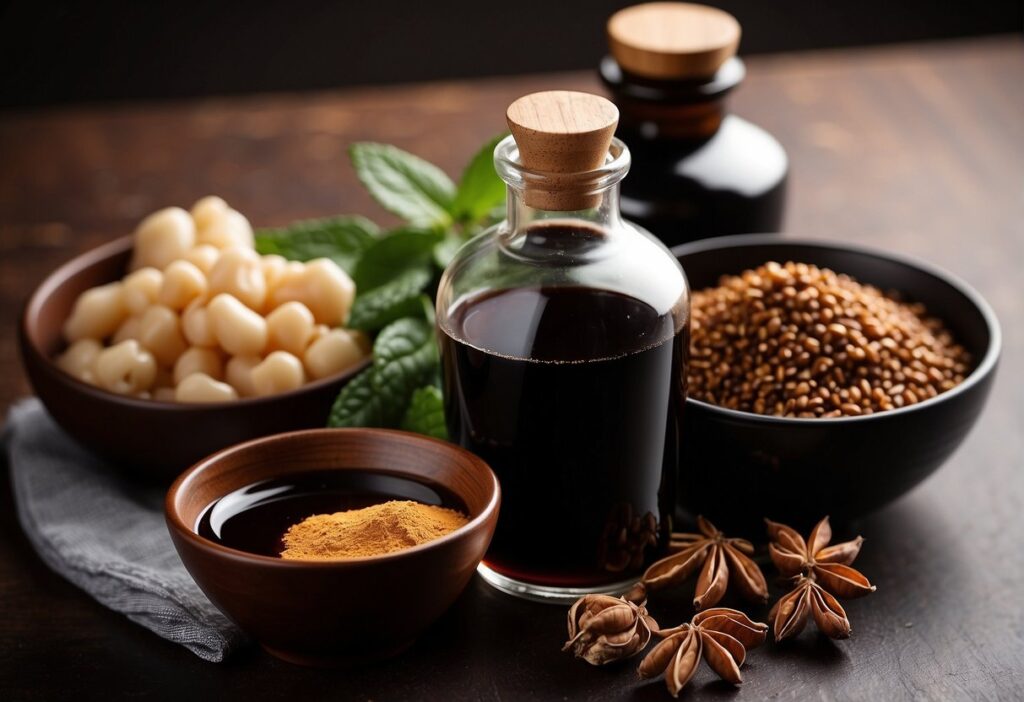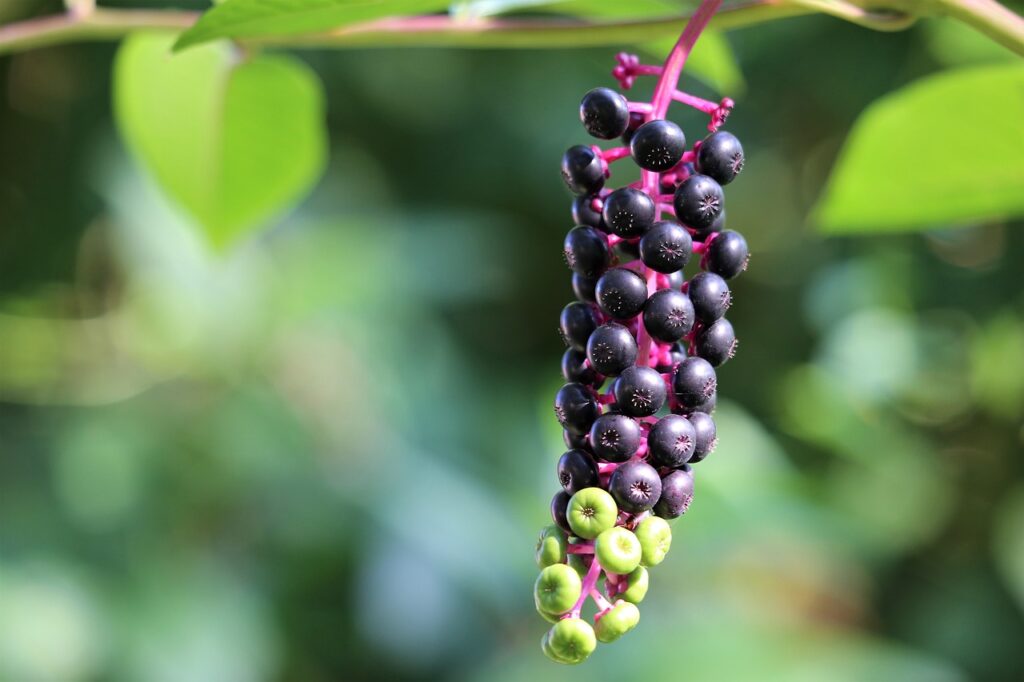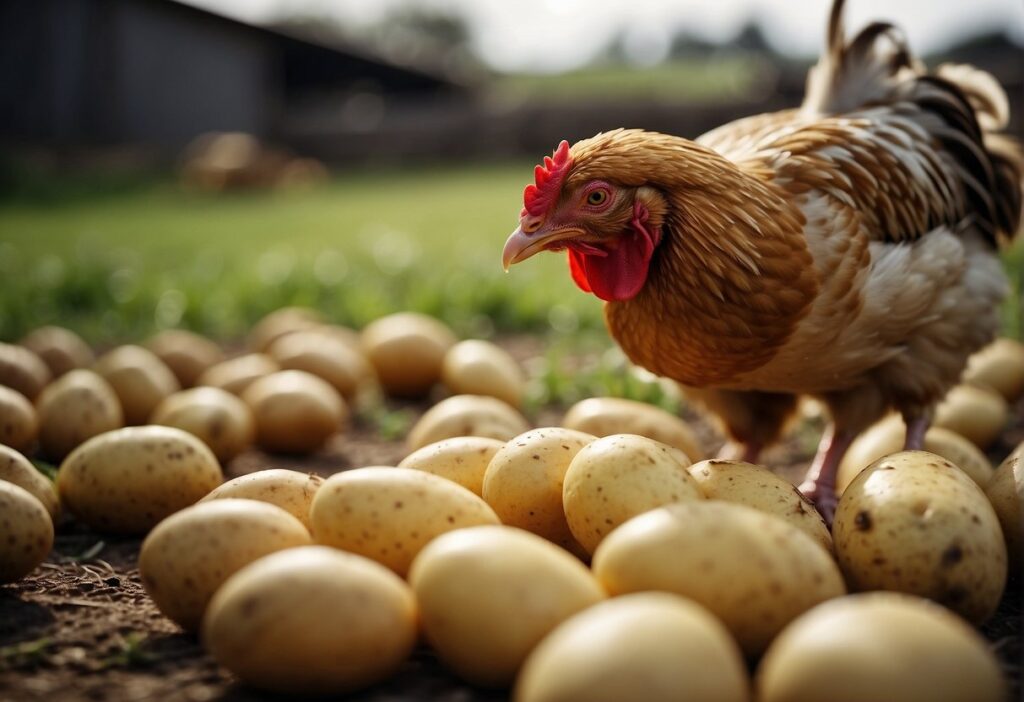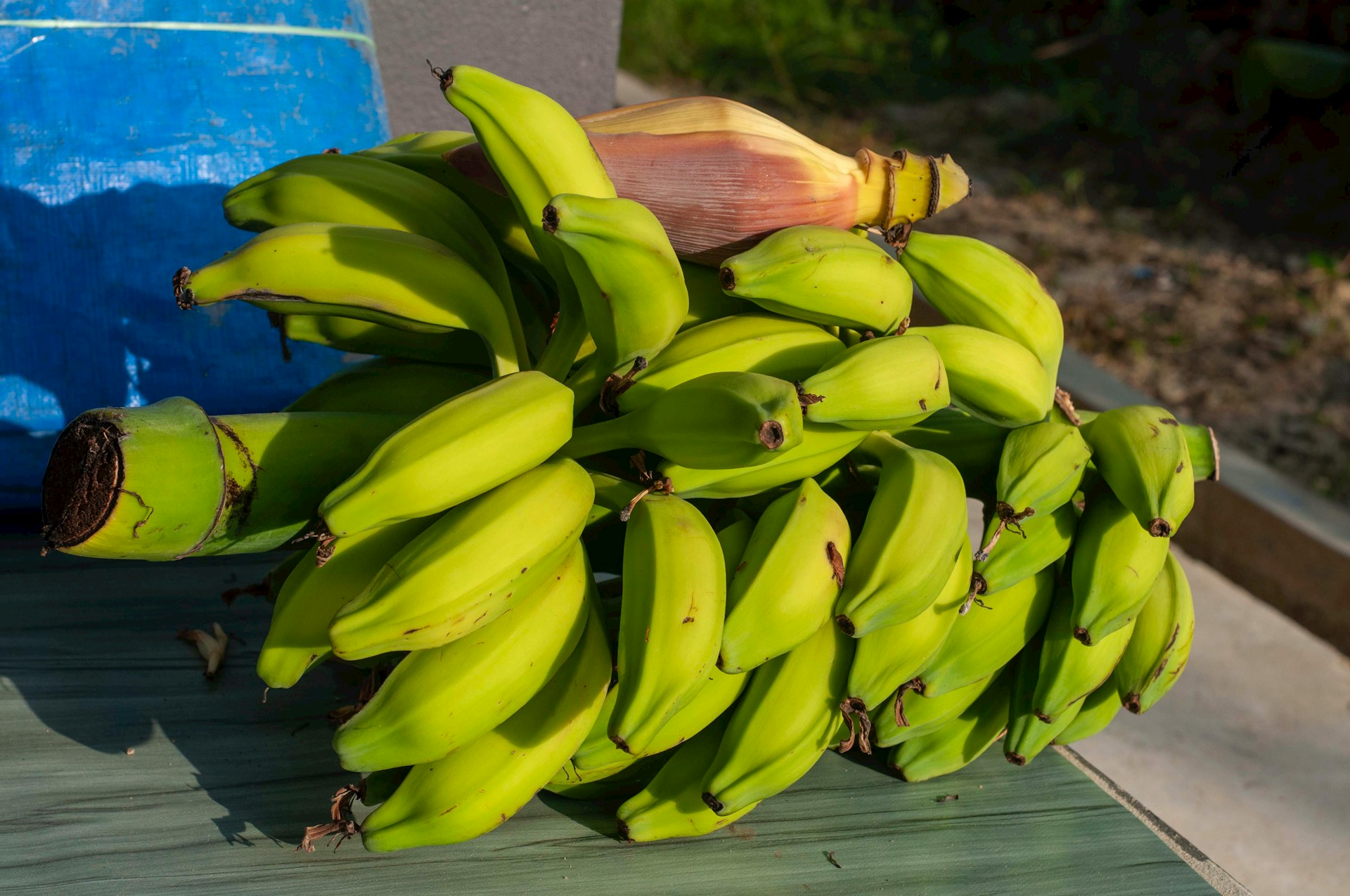
Growing banana trees without seeds may seem like a horticultural challenge because the common banana fruit does not contain viable seeds that one can use for planting. However, bananas are typically propagated through vegetative means rather than seeds—a process known as asexual reproduction. This method relies on using parts of the existing plant to create new plants. For those with a keen interest in gardening, learning the techniques for successful banana tree cultivation offers an engaging way to produce your own fruit at home.
Understanding the propagation process is key to growing banana trees without seeds. Unlike other fruits, a banana plant produces a ‘pup’, which is a small clone of the mother plant that emerges from the base of the banana plant or from the underground rhizome. This pup can be separated from the main plant when it’s large enough and planted independently. To produce optimal fruit, it’s crucial to give the banana tree the right environment and care, including sufficient warmth, sunlight, and water, along with appropriate soil conditions.
Key Takeaways
- Banana trees are propagated asexually, not through seeds.
- New plants are grown from ‘pups’, clones of the parent plant.
- Proper environmental conditions are essential for banana tree growth.
Understanding Banana Tree Propagation
Banana trees are typically propagated vegetatively rather than by seed. This approach ensures the genetic consistency of the banana plants and yields productive crops.
Propagation Methods
Banana tree propagation is mainly accomplished through two vegetative methods: suckers (also known as pups) and tissue culture.
Suckers:
- It stems from the underground rhizome of the banana plant.
- These shoots are genetically identical to the parent plant.
- Once they’ve grown to a suitable size, they’re separated and replanted.
Tissue Culture:
- It is a modern, lab-based method of propagation.
- Involves culturing banana plant cells in a controlled environment.
- Produces large numbers of plants from a small amount of plant material.
Advantages of propagating banana plants vegetatively include the rapid multiplication of plants and the assurance that each plant will bear fruit since seed-grown bananas may not be fertile.
Advantages of Vegetative Propagation
Vegetative propagation has several benefits over sexual reproduction for banana trees:
- Genetic Uniformity: All propagated plants are genetically identical to the parent, ensuring consistency in the crop.
- Disease Free: Choose disease-free mother plants for propagation to help ensure the health of new plants.
- Faster Growth: Banana plants grown from vegetative methods usually fruit faster than those grown from seeds.
- No Seed Dormancy: Since seeds are not used, there’s no waiting period for seed dormancy to pass.
These advantages make vegetative propagation the preferred method for commercial banana production.
Selecting the Proper Planting Site
The success of growing a banana tree hinges on the site’s soil quality and climate conditions, which greatly influence plant health and fruit production.
Soil Requirements
Banana trees require well-draining soil enriched with organic matter to thrive. The ideal soil pH should be between 5.5 and 7.0, which allows optimal nutrient absorption. For preparation, integrate compost into the soil to improve fertility and structure. Here’s a simple checklist for soil readiness:
- Texture: Loamy and clump-free
- Drainage: Verify by water infiltration test
- Organic Content: Incorporate compost or aged manure
- pH Level: Test soil pH and amend if necessary
Temperature and Sunlight
Banana trees favor warm temperatures, generally above 60°F, and are critically vulnerable to frost. They perform best in areas that receive full sun to partial shade, with at least 6 hours of direct sunlight daily. A balance of light and heat is crucial, as excessive exposure can lead to leaf scorch, while inadequate light diminishes growth and fruiting. The planting site should protect the tree from strong winds, which can damage the leaves and affect stability. To summarize:
- Temperature: Above 60°F (15°C); protect from frost
- Sunlight: 6+ hours of full to partial direct sunlight
- Wind Protection: Choose a sheltered location
Maintaining Your Banana Tree
To ensure a healthy banana tree, one must provide consistent care, adequate water, proper nutrients, and protection against pests and diseases. Meticulous attention to these areas promotes vigorous growth and a bountiful fruit yield.
Watering and Moisture Control
Banana trees thrive in moist conditions but are vulnerable to root rot if waterlogged. They require regular watering that maintains consistent soil moisture, which is particularly crucial during the growing season. To manage moisture effectively:
- Check soil moisture: Ensure the topsoil is moist but not soggy.
- Mulching: Apply a layer of mulch around the base to retain moisture and reduce evaporation.
Fertilizing and Nutrient Management
Banana trees are heavy feeders and require fertilizing regularly with a balanced fertilizer to ensure they receive all the necessary nutrients. For optimal nutrient management:
- Fertilizer application: Use a balanced fertilizer and apply it monthly during the growing season.
- Fertilizing schedule:
- Early Growth: Increase nitrogen for leaf growth.
- Fruit Development: Increase potassium and phosphorus for fruit production.
Dealing With Pests and Diseases
Ensuring the tree remains free from pests and diseases is paramount. Various pests, including nematodes and scarring beetles, can harm the tree. To combat these issues:
- Inspection: Regularly inspect the tree for signs of pests or disease.
- Integrated Pest Management (IPM): Employ IPM strategies like introducing beneficial insects or using organic pesticides.
- Sanitation: Promptly remove and destroy affected plant parts to prevent disease spread.
- Avoid injuries: Minimize mechanical injuries to the tree, which can serve as entry points for pests and diseases.
Harvesting and Enjoying Your Bananas
Harvesting bananas at the right time and using proper techniques ensures the enjoyment of this edible fruit at its best quality. Below are the specifics on how to harvest bananas and the best ways to store and consume them.
When and How to Harvest
Bananas, especially the popular Cavendish variety, are best harvested when they are still green but fully sized. One should look for a slight lightening of the green, indicating they’re mature. Bananas develop their flavor and sweetness best when allowed to ripen off the tree. Harvesting is done by cutting the stalk (bunch) from the banana tree with a sharp knife or blade, then hanging the stalk in a cool, shaded area to promote even ripening.
Storing and Using Bananas
After harvest, bananas can ripen at room temperature. They should not be refrigerated while green, as cold temperatures halt the ripening process. Once yellow and ripe, bananas can be stored in the refrigerator to slow down further ripening; the skin may darken, but the fruit inside will remain unchanged for a few more days.
For consumption, bananas are incredibly versatile:
- Fresh: Peel and eat.
- Cooked: Use in banana bread or fried banana dishes.
- Frozen: Great for smoothies or banana “ice cream.”
Bananas offer a range of culinary options and by following these guidelines for harvesting and storage, one can maximize their enjoyment of the fruit.

